Nature. Sound. Memory
Monira Al Qadiri, Joan Jonas, Sigalit Landau, Maya Schweizer, Hannah Weinberger
10.3. —
9.7.2023
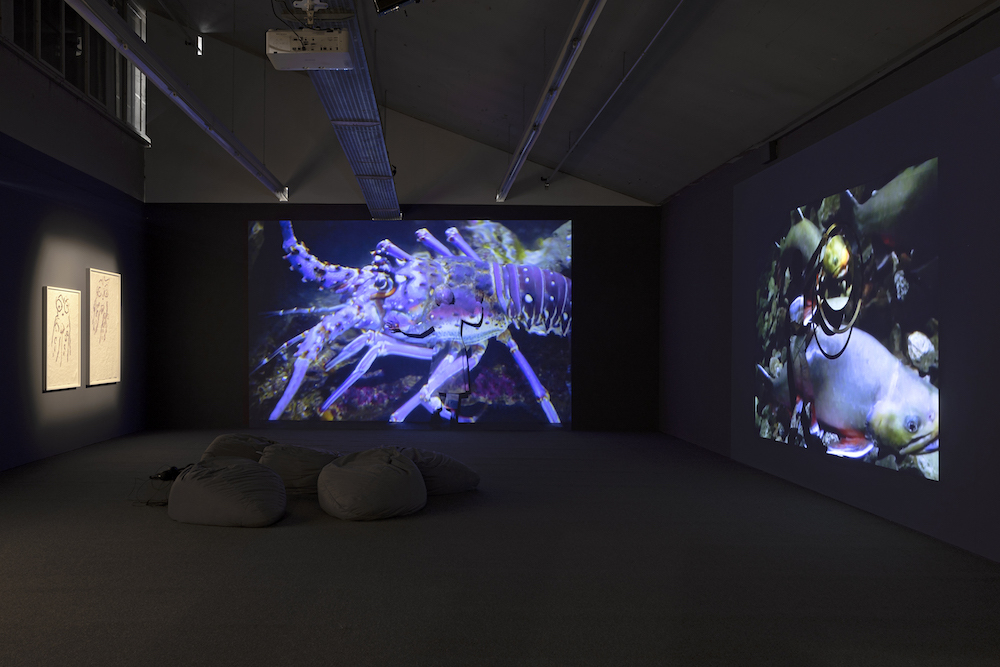
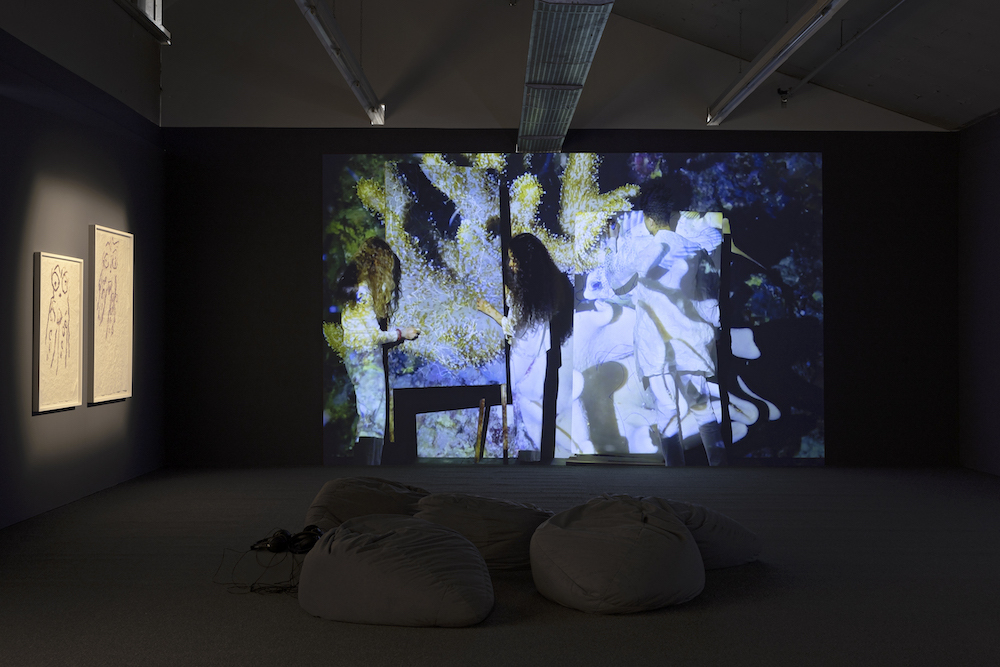
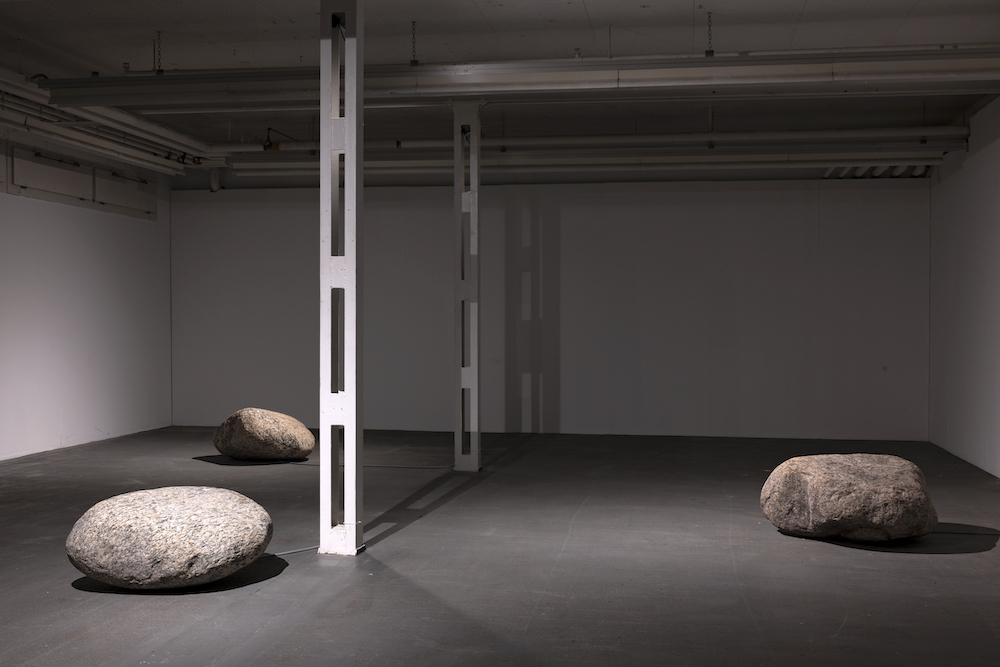
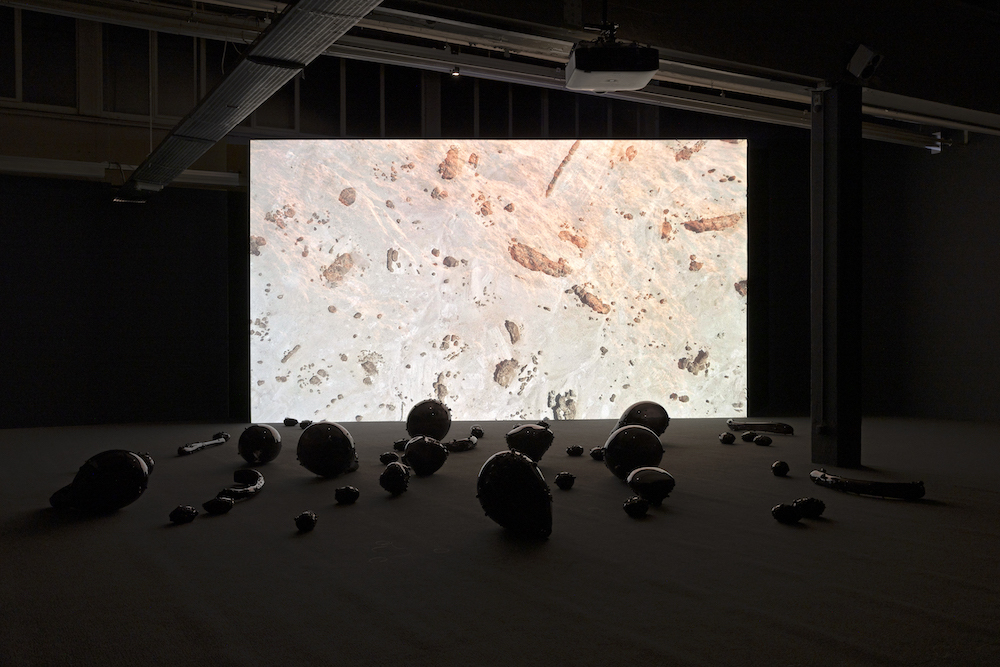
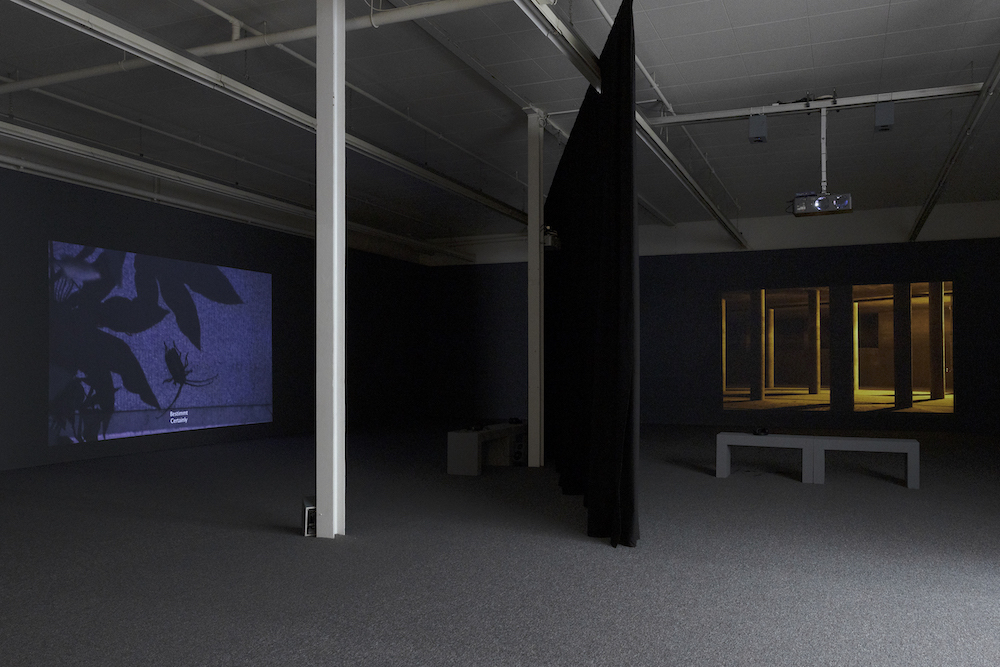
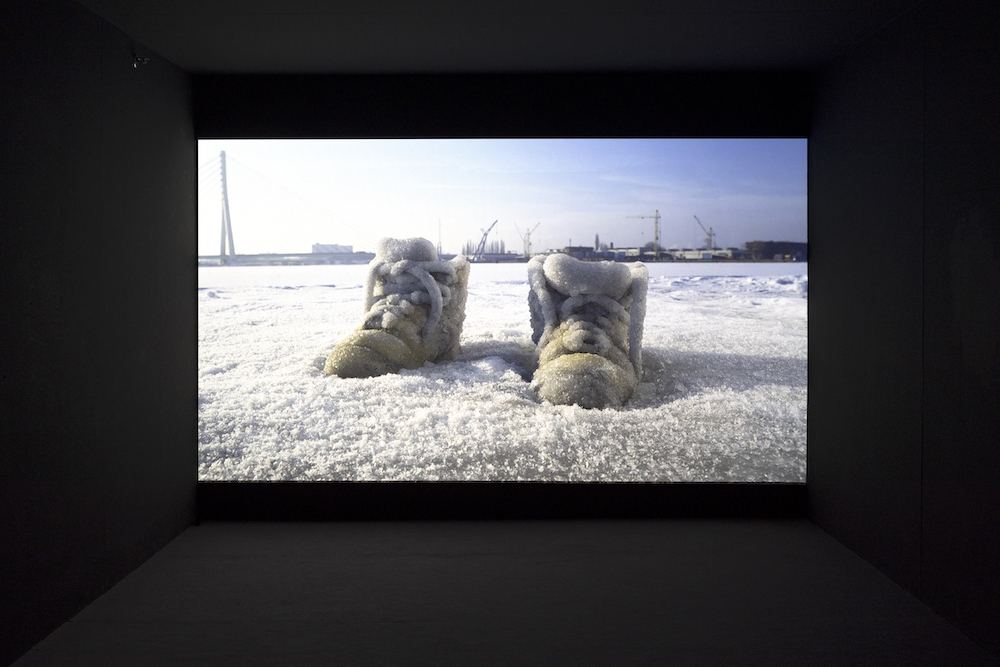
Selected press coverage
Project partners
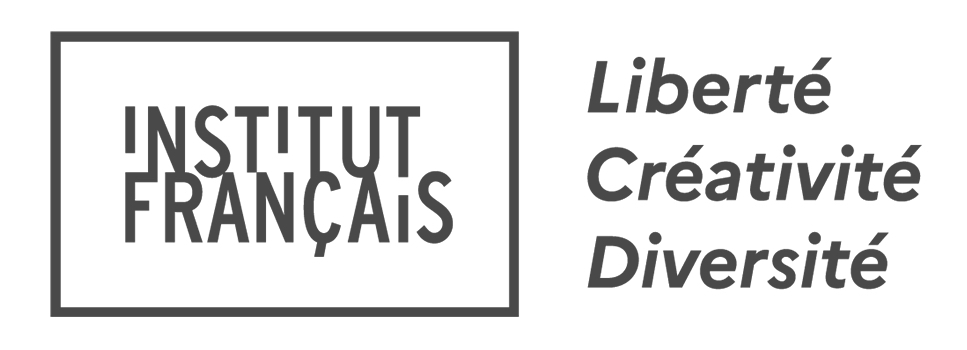
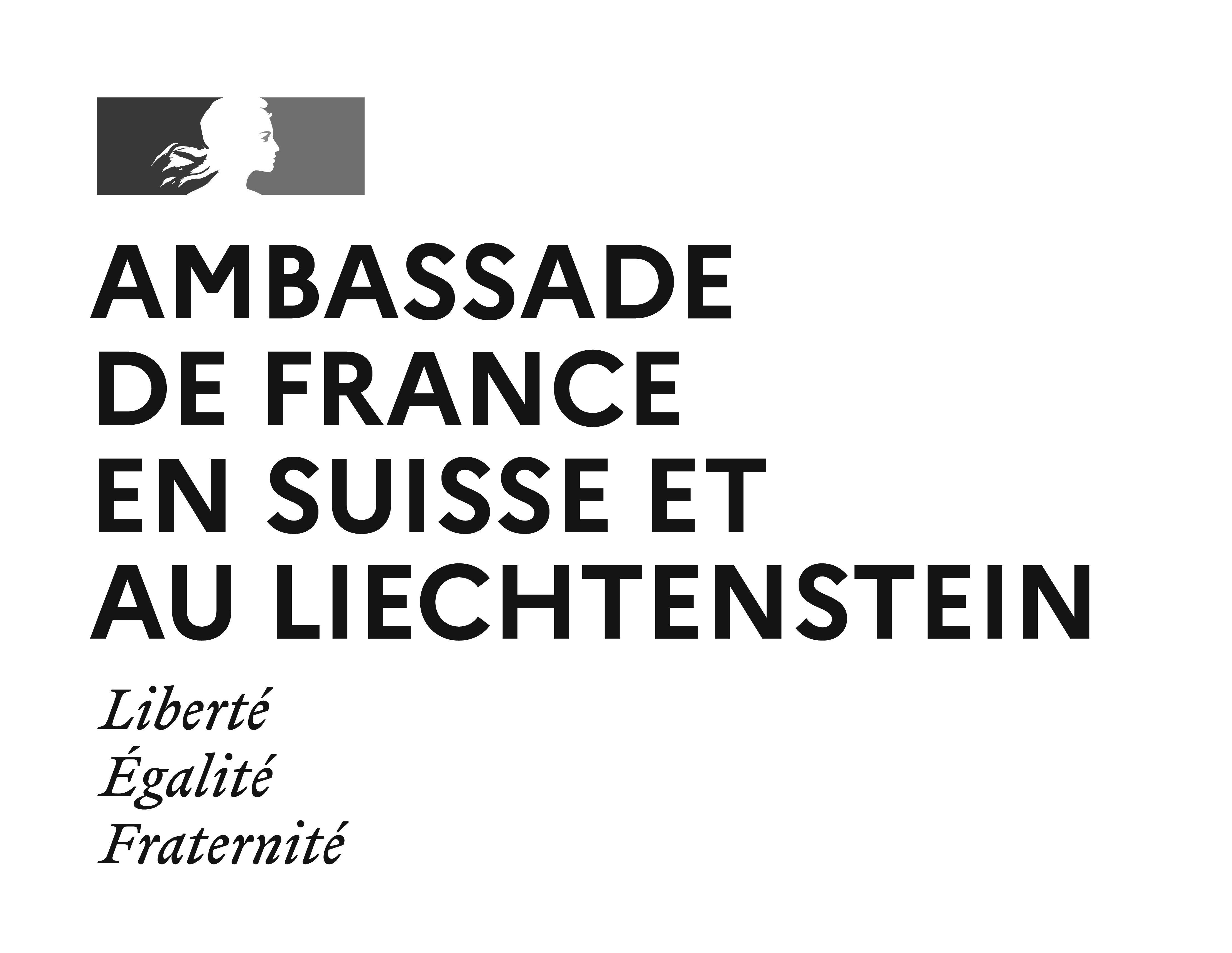

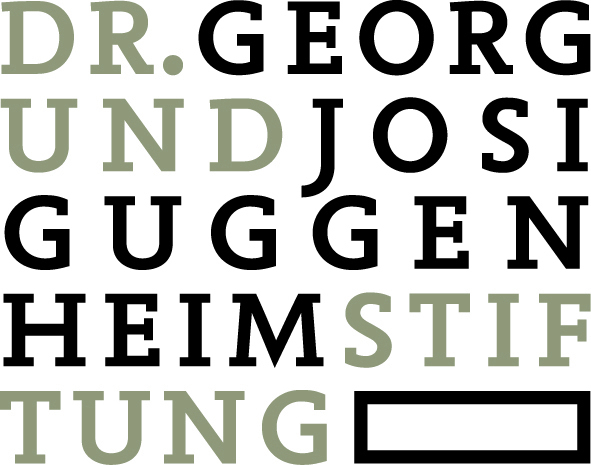
This group exhibition focuses on large-scale installations, particularly video works that directly address the themes of nature, climate change, sound, memory, and participation. Through an approach that is both poetic and immersive, they enable the viewer to have a unique experience and ultimately gain a deeper understanding of these issues. Many of the works are concerned with questions of heedfulness towards natural spaces, history, time, identity, memory, in connection with sound works and performative practices. Both urban and natural spaces—such as oceans, lakes, and deserts—are experienced as interfaces of individual and collective behaviors. They serve as sources for cinematic, textual, and performative observation. In their perception of these familiar or even inaccessible and hidden places and spaces, the featured artists uncover social and political realities as well as inscribed histories and narratives, creating highly striking images and sound fields. This will be the first time that these works will be shown in Switzerland. The exhibition is accompanied by a series of events called Soundfields.
Water flows—through the ground, through straightened streams, springs, and rivers into the sea. It babbles, ripples, flows, and surges onward, before bursting through dark tunnel systems into the open and into the light. It caresses a starfish slowly turning on the seabed—and causes voices to become quiet at last. For many years, the cinematic works of French artist Maya Schweizer have been dedicated to questions of history, identity, and memory, whether in relation to her own personal family history, which is closely linked to the atrocities of the National Socialists, or to the collective memory of Jewish history in Europe. For her installation at Kunsthaus Baselland—the artist’s first appearance in Switzerland—Schweizer will first present L’étoile de mer (2019) and Voices and Shells (2020), two works from the video series she has been working on for some time. (There are also plans to show the latest work in this sequence, Sans histoire (working title; 2023), in a Swiss premiere at Kunsthaus Baselland from June.) Collage-like set pieces and references to film history since the 1920s are combined with various text fragments to form an illuminating narrative, which traces, among other things, German history of the 1930s and 1940s in Munich in particular, from the architecture that is still part of the cityscape today to its many underground spaces and tunnels. (How many corridors and channels did the Nazis build in the city back then in order to protect themselves, to hide, to suddenly attack?) “The facade is not just a façade” is a phrase used at one point in Voices and Shells. It is also history, memory, and it still needs to be read and heard. (Read an interview with the artist and Ines Goldbach here).
On Wednesday, June 14, 2023 the premiere of the video work Sans histoire by Maya Schweizer will take place. Additionally the premiere of her sound installation Vulnérable Witness will be presented by Kunsttage Basel at Basel Social Club, June 11-18, 2023.
For Sigalit Landau, salt is both a central motif and a symbol of remembering, preserving, and transforming. This white gold, as it is sometimes called, has for many years been a hallmark of the artist, who lives in Israel. Because of salt’s multiple layers of meaning across different cultures and time periods, but especially because of the potential of the gradual salting process, ordinary, inanimate objects can be transformed into something extraordinary. With its extremely high salt content at the lowest point on earth, the Dead Sea is both a studio and an experimental site for the artist, who uses the natural process of crystallization to give everyday objects a salt crust. The familiar is rendered alien and charged with poetic mystery at the same time. The items used, such as clothes, shoes, and ring formations, almost seem to be covered with a layer of glittering snow. In this state they form the starting point for the artist’s sculptures, videos, and installations. But the salt content of the Dead Sea also means that a different physical logic seems to prevail; heavy things do not sink, but instead float on the surface of the water. What stories and memories do not disappear into the depths, but inevitably remain on the surface and therefore visible? In Dead Sea, a naked female body, nestled in a spiral of sweet watermelons that grow near the Dead Sea, floats and slowly begins to turn. Body and fruit, symbolically charged, will likewise be covered in a delicate salt crust over time. Sweet becomes salty, life becomes endangered, but they are also conserved and preserved in time. For Sigalit Landau, however, working with salt is also a topical allegory for the threat posed to nature itself; the Dead Sea is currently also one of the world’s most endangered areas due to climate change, exploitation, and falling water levels.
The work of Hannah Weinberger also invites viewers to listen and move through the space mindfully. The Basel-based artist is known for her distinctive and poetic sound and video works, which she sometimes activates through live performances. They are often sound collages of fragments she has found or composed herself, taken from CDs, or has been sent by friends from all over the world. Sounds from private and public as well as everyday and more specific sources are combined over several tracks and channels to form a composition that is played in the space and is sometimes connected to video and light installations or even objects in the space too. Weinberger rearranges and reassembles these “field recordings” and sound frequencies, which she says emphasize the “social cacophony,” into compositions. The rhythm of each sound is crucial: sometimes it condenses and gets louder; at other times the tapestry of sound fades slowly, becoming so soft and quiet that you might almost miss it. Does this, wonders the artist, make the person experiencing the work perceive it a different way at all? Weinberger’s sound works are predominantly site-specific sound installations, whose appeal for the artist lies both in their potential transferability and in their uniqueness. For the exhibition at Kunsthaus Baselland, Hannah Weinberger presents her work Singende Steine. To create this multi-part work, the artist carefully selected three boulders from a Swiss riverbed, which were then hewn and equipped with a complex loudspeaker sound system to make them resonate. It is no coincidence that nature is given a delicate voice that needs to be heard.
Monira Al Qadiri also seems to have given nature a voice, which at times breaks into the space in dark, hulking tones. Holy Quarter, the title of her immense installation of video, sound, and glass objects, refers to the world’s largest and most historically rich desert region between Oman, Yemen, Saudi Arabia, and the United Arab Emirates. With twice as much sand as the Sahara, for example, this region is also known as the Empty Quarter—and indeed it is this incredible vastness, experienced through the perspective of a tracking shot, that offers the eye little to fix upon among the expanses of sand, individual rock formations, and cave systems. Yet in the early twentieth century, explorers such as the scholar St. John Philby were drawn to this region in search of a lost city buried in the sand. Instead, he encountered two massive craters, as well as stone formations containing high levels of metal that later turned out to be the remains of meteorite impacts. The audio track mixes haunting musical sequences and electronic sounds with spoken text. Al Qadiri thus gives a voice to Wabar, the world’s best-preserved crater, and makes it recite from the diary of St. John Philby as well as Arabic religious poetry. The glass objects that are situated next to the video installation and reflect it are reminiscent in their surface texture of both the found stone formations from the meteorite and oil spills. Known as black gold, oil has been the most important fossil fuel for decades and is responsible for the incredible wealth of the entire Arabian Gulf region, including the Emirate of Kuwait, where Al Qadiri comes from; however, it has also led to the severe exploitation of people, nature, and the climate. The dependence of the Gulf states on oil as a raw material, as well as the devastating consequences this has for the entire environmental and social fabric, are clearly evident in Al Qadiri’s works. Like an encounter with an extraterrestrial object that crashes to earth as a meteorite and leaves behind traces, Al Qadiri’s work reveals the dimensions of these interdependent relationships that operate both inside and outside of the realms of the world, space, and time.
Giving nature a powerful voice and placing ourselves on an equal footing with it is the central artistic driving force for Joan Jonas, one of the most prominent US artists. Since as early as the 1970s, Jonas has consistently and explicitly addressed issues relating to nature, climate change, sustainability, and care. Through her ongoing experimentation with the media of drawing, performance, video, and installation, as well as using them in combination, Jonas repeatedly overturns and expands the prevailing definitions of and boundaries between these fields. This exhibition at Kunsthaus Baselland is the first time that Joan Jonas’s work has been represented in Basel and the region in this form. The show features the artist’s latest drawings, texts, and videos from the Ocean series, which deal with one of the artist’s central and most urgent themes. In recent years, Jonas has become increasingly interested in contemporary ecological issues in the wake of climate change, placing non-human life forms and ecosystems at the center of her artistic approach and practice. According to the artist, the ocean has given us so much for such a long time. Now, she says, it is up to us to give something back. In the soundtrack, Joan Jonas recites notes by marine biologist David Gruber, with whom the artist has collaborated at various aquariums around the world, as well as her own texts, in which the artist mixes mythical narratives with contributions by biologists Rachel Carson and Jonathan Balcombe, or passages from Herman Melville’s Moby Dick. In this way, Jonas combines literary and mythical texts with the latest research findings. Awareness and empathy may yet enable us to rethink our approach to the acutely threatened ecosystem of the oceans—and to nature in general. As Maya Schweizer once said: “Voices must be heard and also understood.”
(Ines Goldbach)